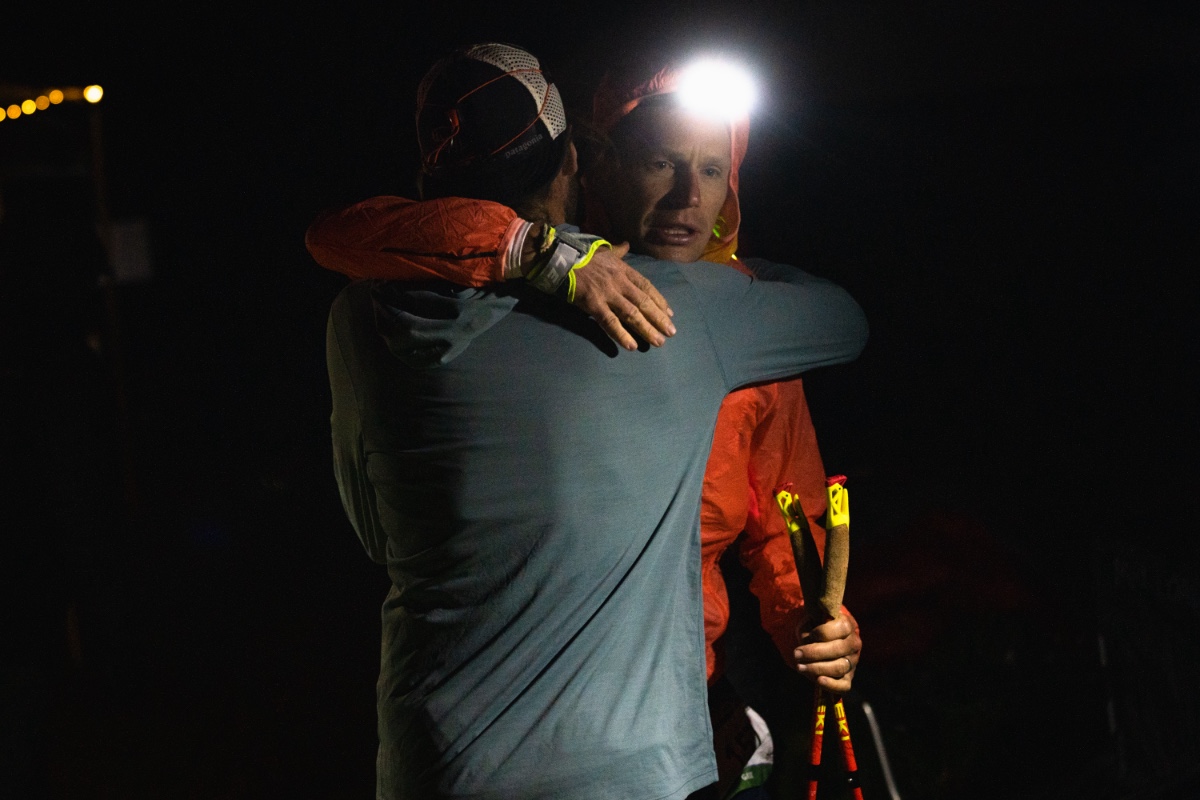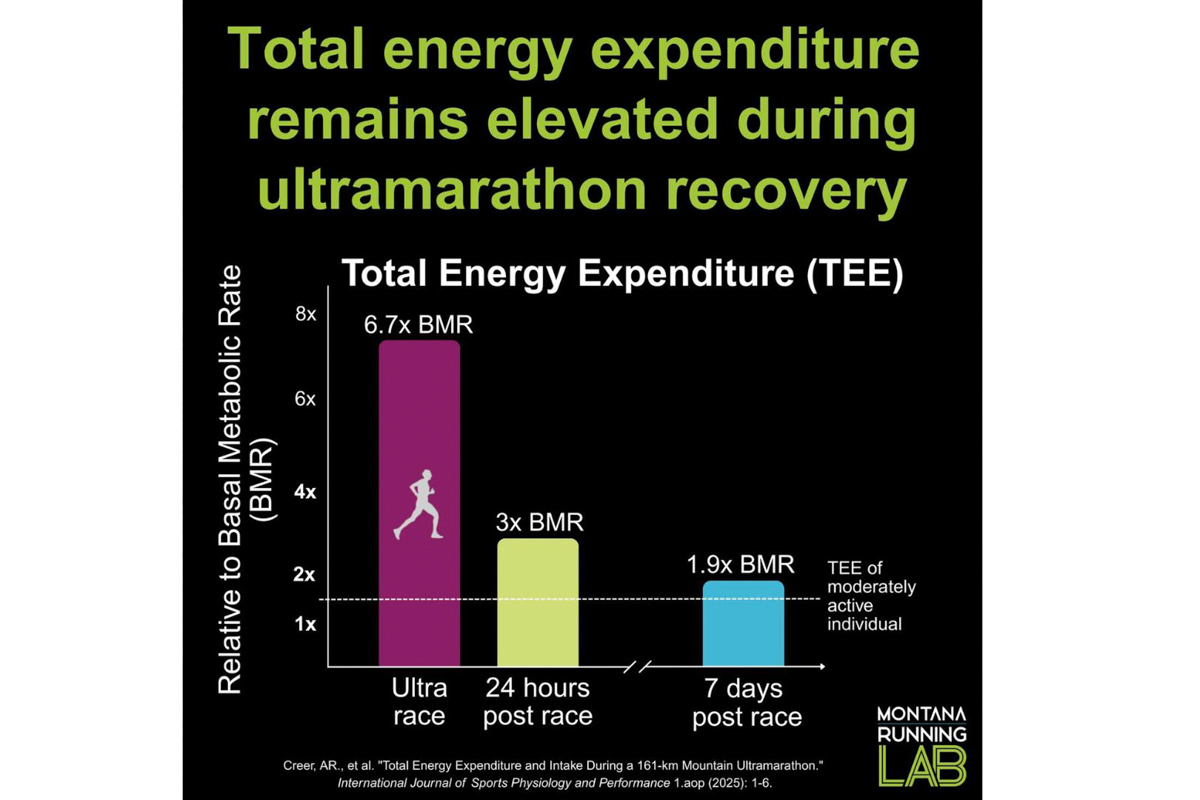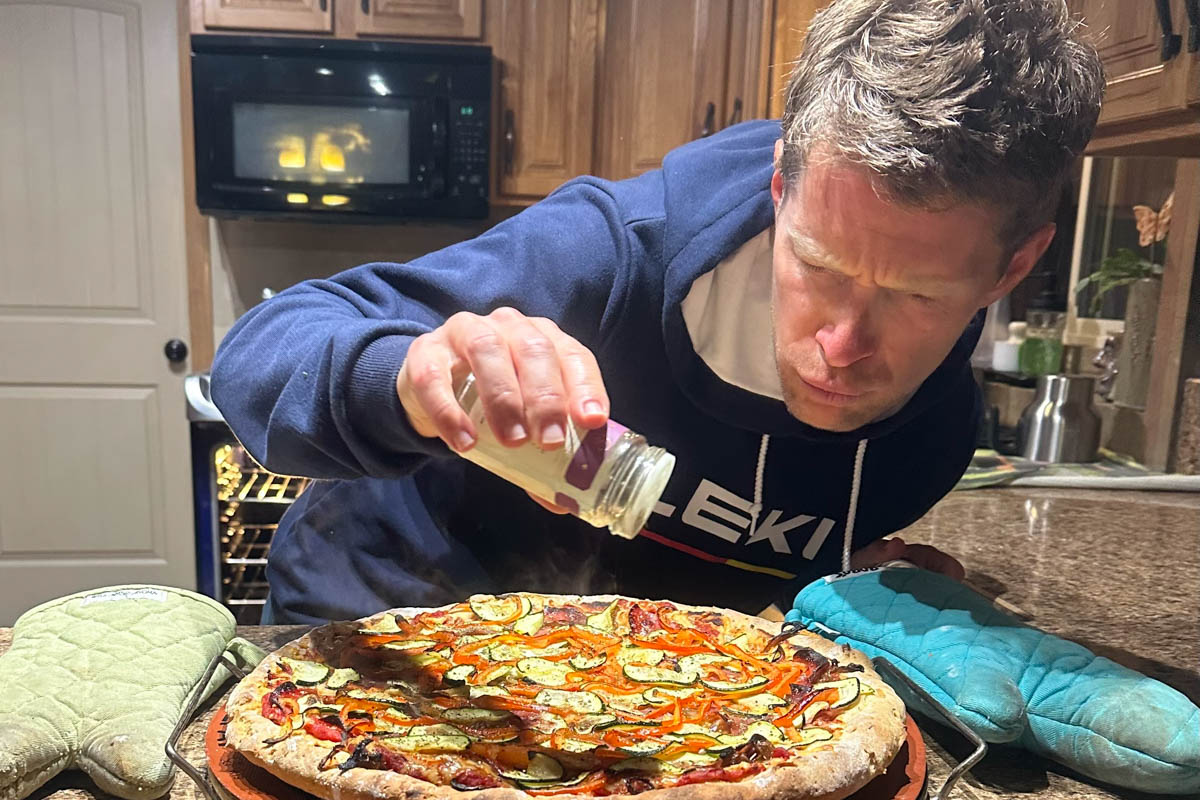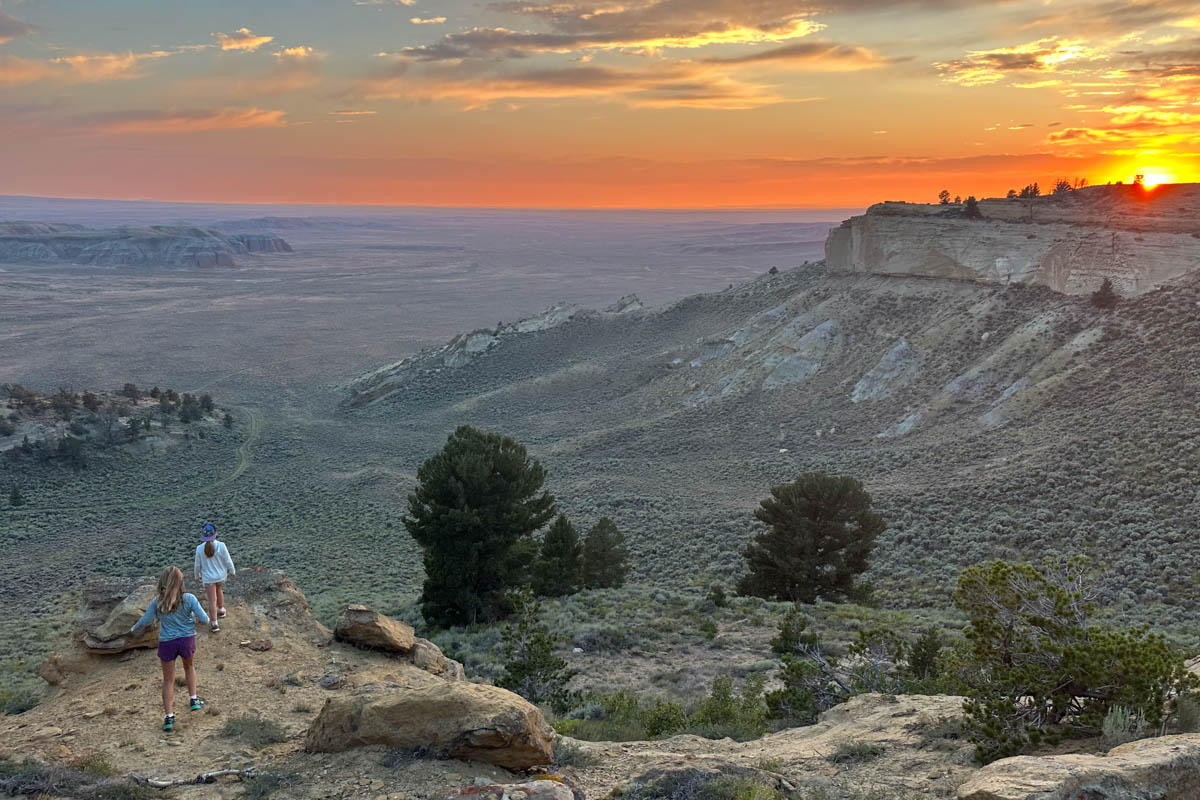In this monthly article series, ultrarunner, race director, and coach Gabe Joyes answers reader questions about anything and everything running. Learn more about this Aska a Pro column, and be sure to fill out the form below to submit your questions for a future article!
In this article, Gabe answers questions about specificity in ultra training, pre-race meals, and potential sources of cramps.
Gabe’s Tip of the Month
Rather than setting outcome-oriented goals for a race — like a specific finishing time or finishing place — I always suggest athletes set process-oriented goals. Outcome goals are usually hindered by variables and factors that are totally out of your control, like weather, trail conditions, and the level of competition. Process-oriented goals are completely in your control — including goals such as how you pace yourself for the first five miles of the race, specific fueling or hydration goals, how you want to feel three-quarters of the way through the race, or what sort of self-talk you are going to utilize during the race’s inevitable difficult moments. Whatever part of the process you choose to work on, you alone are responsible for your success in those moments. You can check off your successes throughout a race and feel great about the progress you are making. The really fun part, though, is that usually if a runner nails all of their process goals during a race, they end up being really pleased with the outcome of their race as well.

The author, while looking a bit rough at the Chapman Gulch aid station at mile 84.5 of the 2025 Hardrock 100, used process-oriented goals to finish ninth. Photo: iRunFar/Eszter Horanyi
Training for Trail Ultras
I’m mostly a marathon runner who can comfortably run a 3:25. I’m hoping to put marathons behind me a bit as my heart is in the mountains. With that being said, I signed up for a 100-mile race for next spring, and I am not sure how to train for it. — Jessie
Road marathons and trail ultramarathons look similar at first — kind of like how tennis and ping-pong look similar at initial glance — but in reality, they take a completely different skillset. It sounds like you already have an excellent engine, and my guess is that you likely need to develop some trail- and mountain-specific skills to help you navigate that 100-mile race. Muscular endurance training is the buzzword and rage after this year’s UTMB, as both Ruth Croft and Tom Evans (the women’s and men’s winners, respectively) reportedly emphasized it in their training. After your next run, try doing this short and sweet muscular endurance training session immediately after your run:
One to 2 sets of:
- 20 x air squats
- 20 x in-place lunges (10 x each leg)
- 20 x jumping lunges (10 x each leg)
- 20 x bicycle crunches
- 1- to 3-minute wall sit
Going up and down mountainous terrain for hours on end takes tons of strength, but it also takes just as much balance and agility — which isn’t typically required in a road marathon. Particularly if you have limited access to mountain terrain, I would also suggest doing some plyometrics training twice a week. That might include exercises like skater hops, single-leg X jumps, dot drills, and single-leg stair jumps. The lower limb and hip strength you get from these exercises will definitely help you have a more enjoyable mountain trail experience!

Strength, agility, and balance are needed for big mountain runs, like this one in the Gros Ventre Wilderness in Wyoming. Photo: Steven Gnam
Pre-Race Meals
What do you usually eat for a pre-race dinner? Do you change how you eat before a race? — Todd
In 2019, I had an amazing pizza before the North Fork 50k that included plenty of cheese, but also tomatoes, arugula, and a reasonable amount of beets. Beets are known for their performance-enhancing benefits, so after I set the course record at the race, I naïvely assumed the beets were the key to my success and took the “more is better” approach that is pervasive in ultrarunning before the Leadville 100 Mile later that year. Instead of a nicely balanced pre-race meal the night before the race, I ate what could only be described as a completely excessive amount of beets. I’ll spare you all the extraordinarily gory details, but it took a dozen bathroom stops during the first 30 miles of the race to expel all of those fiber-rich (and shockingly purple) beets from my digestive tract. The point of my crappy story is that if your nutrition strategy that you regularly utilize before all of your long runs and workouts is working for you, then don’t significantly change it before a race.
These days, the only nutrition changes I make in the lead-up to a race are a slight reduction in fiber — the origins of this intervention are probably obvious — and a slight increase in carbohydrates. I also slightly decrease my fat intake as I tend to consume a lot of dietary fat through chocolate, nuts, and cheese. For me, pre-race dinner is high in carbohydrates and sodium and easy to digest — typically risotto, pasta, or pizza (sans beets, of course).
Post-Race Recovery and Appetite
How do you recover after a big effort or race? What should fueling look like in the couple of weeks after? Is it normal to have an increased appetite even a couple of weeks after? When should I start running again? — Alyssa
I have found that there are two different types of people out there in how they deal with recovery. One group highly values their daily movement and wants to get right back to training immediately after a big event. Another group savors the recovery period and wants to stretch it out as long as possible. Like so many things, I’ve found that the best approach is somewhere in the middle. For a really big effort that stretches your fitness and abilities, it is prudent to take at least a few days completely off from running, and really any serious activity at all. I often direct athletes to have a recovery-oriented training session after a race that is literally going for a walk with an ice cream cone in hand. Doing some sort of non-running activity — such as biking, climbing, skiing, yoga, hiking, or stand-up paddle boarding — in your first sessions back after a race is helpful for getting the body moving again without straining the specific muscles and soft tissue that you asked an awful lot of during your last race.
As far as appetite goes, my suggestion would be to listen to it! Metabolism can feel out of control in the first few days after a race, and it is okay to indulge that and have dessert three (or more?) times per day. According to research in the “International Journal of Sports Physiology and Performance,” even a week after an ultramarathon — with no additional exercise — your metabolism is still elevated to higher than an average person.

Basal metabolism can stay elevated for a week after an ultra. Image courtesy of Montana Running Lab.
Potential Sources of Cramps
I feel good at the start of races, but I always end up with cramps after a couple of hours — and I never cramp in training. Do I need more electrolytes? What else could be my problem? — Martin
Settling into a sustainable pace at the beginning of a race is tough. If you show up to the starting line fit, well-fueled, and well-hydrated, then even your moderate to high-effort paces can feel relatively comfortable just because you are so fresh. Plus, the adrenaline and nerves of the starting line make those opening few miles feel like cuttin’ butter, even if the reality is you are running at more of a workout effort.
If you have access to heart rate data, I think you will probably find that your heart rate is fairly high for those first couple of hours — probably something close to what is called Steady State Effort, which is usually only sustainable for about an hour or so. This pace feels great for a lot of people, but your brain knows that sort of effort is not sustainable. If your brain is concerned about you destroying yourself, how does it slow you down in the spirit of self-preservation? Cramps. Electrolyte balance is always something to be mindful of with cramps, but if that really was the source of the cramps so early in the race, then you probably showed up to the starting line scarily dehydrated and underfueled already.

Gabe Joyes settling into a comfortable running pace and making sure he’s well-fueled and hydrated. Photo courtesy of Gabe Joyes.
Submit Your Questions
Send us your questions! Use the form below or send us a message on Instagram, and we’ll consider your questions for future articles.
Call for Comments
- Do you agree with Gabe’s answers to this month’s questions?
- What pressing questions do you have about trail running and ultrarunning?


